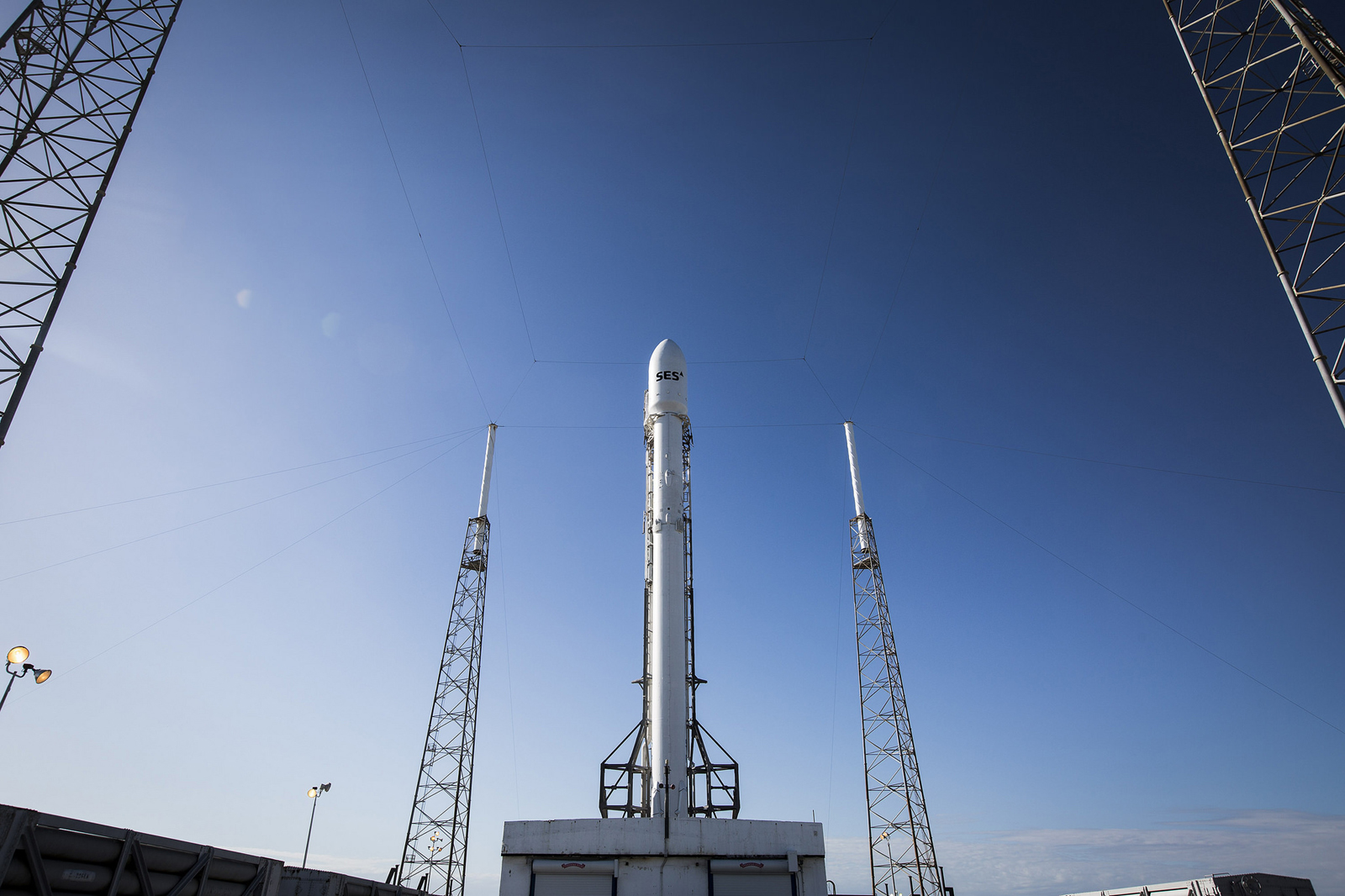SpaceX Delays Satellite Launch to June 4 for Falcon 9 Rocket Checks

SpaceX has called off its planned launch of a commercial communications satellite on a Falcon 9 rocket on Friday (June 1), citing the need for extra tests on the booster's upper stage.
A previously flown Falcon 9 rocket was scheduled to launch the SES-12 satellite into orbit from SpaceX's pad at Cape Canaveral Air Force Station in Florida Friday at 12:29 a.m. EDT (0429 GMT). But the mission will now launch no earlier than Monday, June 4, SpaceX representatives said.
"Standing down from Friday's launch attempt to run additional tests on Falcon 9's second stage," SpaceX representatives wrote on Twitter. "Currently working toward a June 4 launch of SES-12 from Pad 40 in Florida." Pad 40 is Space Launch Complex 40 at Cape Canaveral Air Force Station. [See SpaceX's Rocket Evolution in Pictures]
SpaceX initially aimed to launch the SES-12 satellite today (May 31). But on Sunday, the company announced a one-day slip to Friday. At the time, SpaceX said its launch team was "using [the] additional time to perform pre-launch vehicle checks, also closely watching weather conditions at the Cape."
SpaceX fired up the nine engines on the Falcon 9 rocket's first stage last week during a static fire test on May 24. The Falcon 9's first stage was last used in September 2017, when it launched the robotic X-37B space plane for the U.S. Air Force and then landed successfully. The booster is an older "Block 4" model. (SpaceX's newest variant, the "Block 5," debuted this month) and is not expected to make a landing after the SES-12 mission.
The SES-12 satellite was built by Airbus Defence and Space for the Luxembourg-based telecom company SES. The satellite is designed to provide direct-to-home video and data services to SES customers across the Asia-Pacific region, according to a mission profile.
SES-12 is destined for a geostationary orbit 22,300 miles (35,900 kilometers) above Earth. It will replace SES' older NSS-6 satellite, according to an SES description.
Breaking space news, the latest updates on rocket launches, skywatching events and more!
Email Tariq Malik at tmalik@space.com or follow him @tariqjmalik. Follow us @Spacedotcom, Facebook and Google+. Original article on Space.com

Tariq is the award-winning Editor-in-Chief of Space.com and joined the team in 2001. He covers human spaceflight, as well as skywatching and entertainment. He became Space.com's Editor-in-Chief in 2019. Before joining Space.com, Tariq was a staff reporter for The Los Angeles Times covering education and city beats in La Habra, Fullerton and Huntington Beach. He's a recipient of the 2022 Harry Kolcum Award for excellence in space reporting and the 2025 Space Pioneer Award from the National Space Society. He is an Eagle Scout and Space Camp alum with journalism degrees from the USC and NYU. You can find Tariq at Space.com and as the co-host to the This Week In Space podcast on the TWiT network. To see his latest project, you can follow Tariq on Twitter @tariqjmalik.
